1. 24-Hour Everything

Need toothpaste at 2 a.m.? No problem in America—just hit up a 24-hour pharmacy or big-box store. That kind of round-the-clock access is rare in most other countries. Shops often close early, especially on Sundays, and late-night options are limited.
The U.S. thrives on convenience, and that’s reflected in business hours, according to Claire Cain Miller from The New York Times. Night owls and last-minute shoppers have endless options. But overseas, you might have to actually plan ahead (gasp!). Once you leave the U.S., the constant availability starts to feel less like a given and more like a luxury.
2. Endless Variety at the Grocery Store
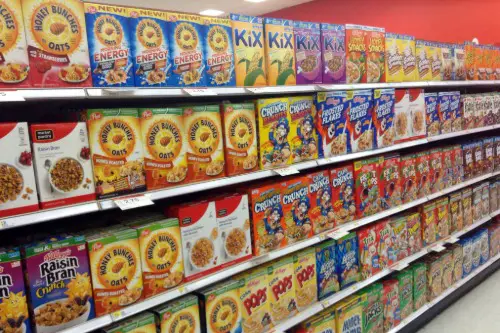
Need 40 different types of cereal? How about 12 flavors of Oreos? American grocery stores are famous for their variety—sometimes to the point of overwhelm, according to David B. Garner from Reformation 21. In many other countries, you’ll find a few options of each item, and that’s it.
It’s a reflection of abundance, consumer choice, and a hyper-competitive market. But to someone used to fewer options, it can feel excessive or even wasteful. This variety also contributes to a very American idea: that more choice equals better quality. It’s not necessarily better—it’s just very, very different.
3. Sales Tax Shenanigans
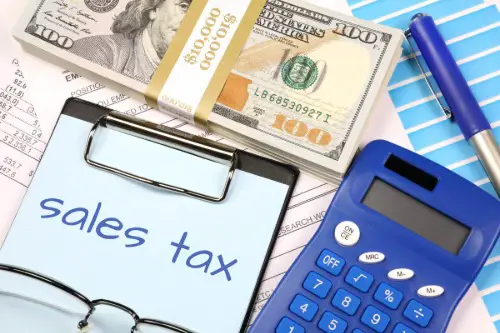
You see a price tag that says $9.99, but when you get to the counter, it’s suddenly $10.73. In America, sales tax is added at checkout instead of being included in the price. That’s not the case in many other countries, where the sticker price is what you actually pay. It’s surprisingly disorienting for travelers who expect to pay exactly what’s listed.
This system varies not just by state, but sometimes even by city or county. So the same item might cost you different amounts depending on where you are. It makes budgeting a little trickier if you’re not used to doing the math on the fly. Once you travel, you realize how refreshing it is to have prices that don’t come with a surprise ending.
4. Flags. So Many Flags.

Drive through any American suburb and you’ll see flags flying on homes, businesses, trucks—you name it. Patriotism is visually loud in the U.S., and the flag is everywhere, according to Arnaldo Testi from TIME Magazine. But once you leave the country, you realize how rare it is to see a national flag outside of government buildings or official events. In many countries, that kind of flag display is considered overly nationalistic.
The U.S. has a unique relationship with its symbols. The flag isn’t just a piece of cloth—it’s part of the culture. Kids pledge allegiance to it in school, and holidays like the Fourth of July are full of flag-centric decor. It’s a kind of everyday patriotism that’s not mirrored in most of the world.
5. Drive-Thru Everything

Drive-thru banks, pharmacies, coffee shops, dry cleaners—you name it, you can probably roll through it in America, according to Kim Severson from The New York Times. It’s all about speed, convenience, and not having to leave your car. In most other countries, drive-thrus are limited to fast food, if they exist at all. The concept of doing your banking from the driver’s seat can seem downright bizarre elsewhere.
The American love of driving shapes so many aspects of life. It’s part car culture, part urban sprawl, part time-saving obsession. In denser or more pedestrian-friendly countries, this just isn’t a thing. The first time you have to physically walk into a pharmacy abroad, you’ll realize just how unique this convenience is.
6. Tipping Culture

In the U.S., tipping is basically mandatory—and it adds up fast. You’re expected to tip waiters, bartenders, baristas, hairdressers, rideshare drivers, hotel staff… the list goes on. In many other countries, though, tipping is minimal, optional, or even considered rude. That 20% you’re used to dropping on a dinner check can seem excessive to non-Americans, according to Alex Greig from Qantas.
Tipping abroad often involves rounding up a bill or leaving small change. And in places like Japan, service is considered part of the job and doesn’t warrant extra money. Americans often don’t realize how deeply ingrained tipping is in their daily interactions. It’s one of the biggest culture shocks when traveling or living abroad.
7. Massive Portion Sizes

Ordering a small in the U.S. can look like a medium—or large—anywhere else. Restaurants regularly serve portions that could feed two people, easily. It’s not uncommon for visitors to be shocked by the size of an American burger, a plate of pasta, or even a soft drink. In contrast, portions are more modest in most of the world.
This isn’t just perception—it’s backed by research showing American meals are significantly larger. Part of it is marketing (more value for money), part of it is habit. That’s also why “doggie bags” are so normalized in the States. Other countries often just eat smaller portions and waste less to begin with.
8. Air Conditioning as a Lifestyle
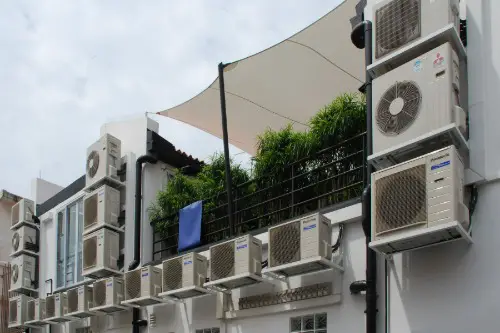
Stepping into a store, movie theater, or office in America often feels like entering a walk-in freezer. AC is a default setting, and buildings are kept icy even in mild weather. In many other countries, air conditioning is used sparingly, if at all. High electricity costs and different climate tolerances mean sweating is just part of life.
In Europe or Asia, you might open a window or use a fan before cranking the AC. Even hotels and public transport can be surprisingly warm to American visitors. Americans tend to associate cool air with comfort and professionalism. Abroad, that same icy blast can seem excessive or even unhealthy.
9. Toilets with Gaps in the Stalls
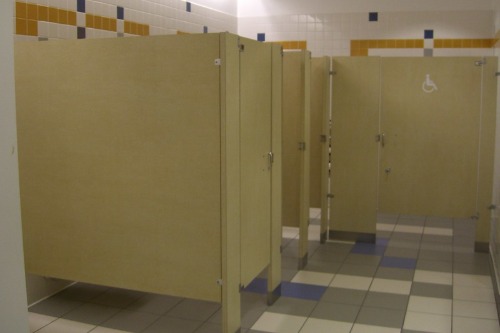
It’s one of those things you don’t question—until you experience stalls with full walls and doors elsewhere. American public restrooms often have gaps at the bottom, top, and even the sides of the doors. It’s a bit of a privacy mystery to many travelers. Other countries prioritize enclosed, private stalls, and the difference is immediately noticeable.
The reasons for the gaps vary—cost, airflow, vandalism prevention—but that doesn’t make them any less awkward. It’s particularly strange for people used to floor-to-ceiling doors. Once you’ve experienced a restroom with actual privacy, it’s hard to go back. And you’ll definitely start wondering why the U.S. never quite figured this one out.
10. Prescription Drug Ads on TV

Watching TV in the U.S. means sitting through cheerful commercials listing terrifying side effects. Drug ads are everywhere, complete with happy actors and ominous voiceovers. Outside the U.S. (and New Zealand), this kind of direct-to-consumer pharmaceutical advertising is banned. Most countries prefer that medication decisions stay between you and your doctor—not between you and a commercial.
It’s jarring for international visitors to see medical decisions marketed like soft drinks. There’s a real concern globally about overmedication and self-diagnosing. Yet in the U.S., it’s considered normal to “ask your doctor about…” whatever the latest ad is promoting. That normalization of pharmaceutical marketing is truly an American phenomenon.
11. Ice, Ice, Everywhere

Americans really love their ice. Whether it’s in water, soda, or even wine (no judgment), ice cubes are expected. In other parts of the world, though, drinks are often served lukewarm or lightly chilled. And if you ask for ice, you might get a suspicious glance—or maybe two cubes.
This isn’t about hospitality; it’s about refrigeration norms and cultural preferences. Europeans, for instance, believe too much ice waters down the flavor. Plus, electricity and refrigeration costs can be higher in many countries. Once you leave the States, you start to notice that an overflowing glass of ice is practically a national identity marker.
12. Wearing Workout Clothes Everywhere

Leggings at brunch, sneakers at the office, hoodies at the movies—athleisure is practically the American uniform. It’s comfy, it’s casual, and it’s accepted in nearly every setting short of a wedding. But in many parts of the world, people dress more formally day to day. Even just running errands might involve a proper outfit.
This isn’t about fashion snobbery—it’s about cultural expectations around presentation. Europeans, for instance, often associate dressing well with self-respect. In contrast, Americans embrace function over form in most everyday settings. That cultural difference becomes clear the moment you feel underdressed in your favorite hoodie abroad.
13. Free Refills on Soda
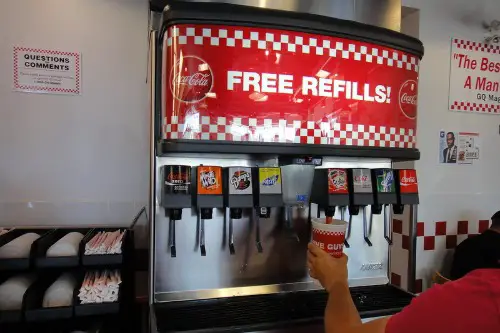
In the U.S., you can sit down at a restaurant, order a soda, and keep sipping away without paying extra. The server just keeps the glasses coming like it’s no big deal. But step into a café in Paris or a diner in Tokyo, and that second Coke will likely cost you. Free refills are so common in America that many people don’t even realize it’s a uniquely generous perk.
In most countries, a soda is treated more like a specialty drink than a bottomless beverage. You’re paying for the drink, not a drink experience. This cultural difference often catches Americans off guard when traveling abroad. It’s not rude—it’s just not how things are done elsewhere.


